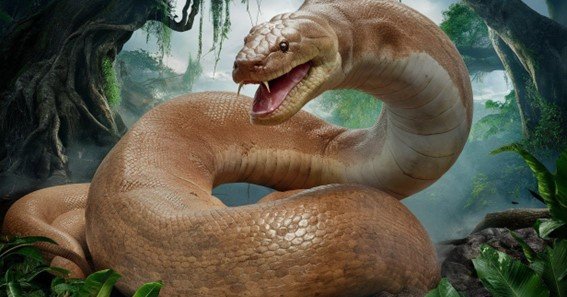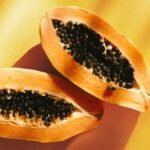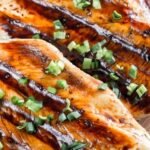The Titanoboa is one of the largest and most fascinating prehistoric snakes ever discovered, estimated to have lived around 60 million years ago. With a length of up to 42 feet and a weight of more than a ton, this massive creature ruled the ecosystems of the ancient rainforests. But what did the Titanoboa eat, and how did its size affect its diet? In this article, we’ll explore the Titanoboa diet, feeding habits, and the types of prey this giant snake hunted.
What Did Titanoboa Eat?
The question of what did Titanoboa eat is intriguing, given its massive size and predatory capabilities. The Titanoboa diet consisted mainly of large prey that was abundant in its swampy environment. Evidence suggests that its primary food sources were large fish, specifically from the catfish family, which thrived in the warm waters of prehistoric South America. Its size enabled it to overpower these large aquatic animals with ease, swallowing them whole.
Titanoboa Feeding Habits and Hunting Behavior
To understand the Titanoboa feeding habits, we need to look at how modern-day snakes like anacondas hunt, as they provide a close comparison. Titanoboa likely used ambush tactics, lying motionless in water or dense vegetation until a prey animal came close enough to strike. The snake’s powerful muscles allowed it to constrict its prey, suffocating it before swallowing it whole. This Titanoboa hunting behavior mirrors the tactics used by modern constrictors.
The warm, swampy environments of ancient South America were filled with suitable prey, making it an ideal hunting ground for this massive predator. Its ability to blend into its surroundings and its sheer strength made Titanoboa a dominant predator in its ecosystem.
Titanoboa Prey and Meal Preferences
The Titanoboa prey primarily consisted of large fish and potentially small to medium-sized land animals. Fossil evidence shows that catfish and other aquatic animals were abundant during Titanoboa’s time, making them the likely targets of this massive snake. Titanoboa meal preferences suggest that it favored slow-moving, easy-to-capture prey that provided enough sustenance to satisfy its large size.
While the bulk of its diet came from aquatic animals, there is speculation that Titanoboa could have preyed on land-dwelling animals when necessary. However, this would have been less frequent, as aquatic prey was more readily available.
Titanoboa Diet Analysis and Feeding Ecology
A detailed Titanoboa diet analysis gives us insights into its role in the food chain. Titanoboa’s diet would have placed it at the top of the prehistoric food web, making it a dominant predator with few rivals. Its feeding ecology indicates that it was a key player in maintaining the balance of its ecosystem, controlling the population of large fish and other prey.
Its massive size would have also meant longer digestion times between meals, similar to large modern snakes, which can go weeks or even months without eating after consuming a large meal. This efficient method of energy storage was an essential aspect of the prehistoric snake diet.
Titanoboa’s Role as a Predator
Titanoboa’s immense size and strength allowed it to play a significant role in its ecosystem. As a top predator, it would have had very few natural enemies, dominating the ancient wetlands. The Titanoboa predator role ensured that it could control the population of large aquatic animals, which made up the bulk of its diet.
In addition to its size, its stealth and ambush hunting tactics ensured that it was one of the most feared creatures in its environment. No other animals at the time posed a significant threat to the Titanoboa, allowing it to thrive for millions of years before environmental changes led to its extinction.
Conclusion
The Titanoboa diet was primarily composed of large aquatic prey, such as catfish, which it captured and consumed using powerful constriction. Its size, feeding habits, and role as an apex predator made it a dominant force in its ecosystem. By analyzing its diet and behavior, we gain a better understanding of how this giant snake lived and ruled the ancient rainforests of South America.
FAQ
1. What did the Titanoboa eat?
The Titanoboa primarily ate large aquatic animals, particularly fish like catfish, which thrived in the prehistoric swamps of South America.
2. How did the Titanoboa hunt its prey?
Titanoboa used ambush tactics, lying in wait for its prey in water or dense vegetation, then striking quickly and using its powerful body to constrict and suffocate its prey.
3. What were the main food sources for the Titanoboa?
The main Titanoboa food sources were large fish and possibly small to medium-sized land animals, although it primarily targeted aquatic prey.
4. Was the Titanoboa the top predator in its ecosystem?
Yes, the Titanoboa was the apex predator in its environment, with very few natural enemies due to its massive size and strength.
5. Did the Titanoboa only eat fish?
While fish were the primary component of the Titanoboa diet, it may have occasionally preyed on land animals, although this was likely less common.
This article offers a comprehensive look at the Titanoboa’s diet, explaining its feeding habits, prey preferences, and the hunting tactics it used to dominate its environment.










